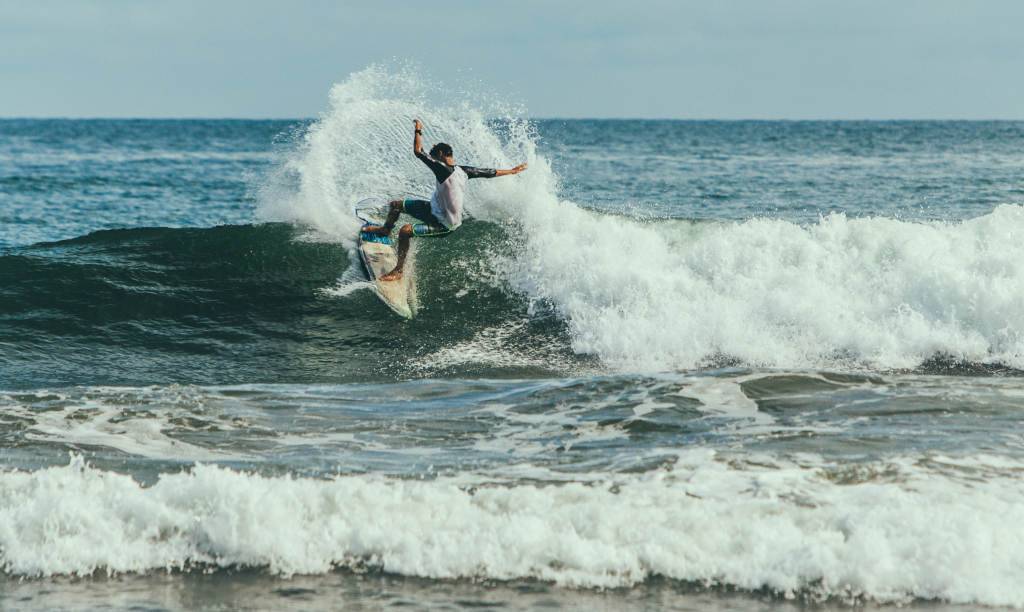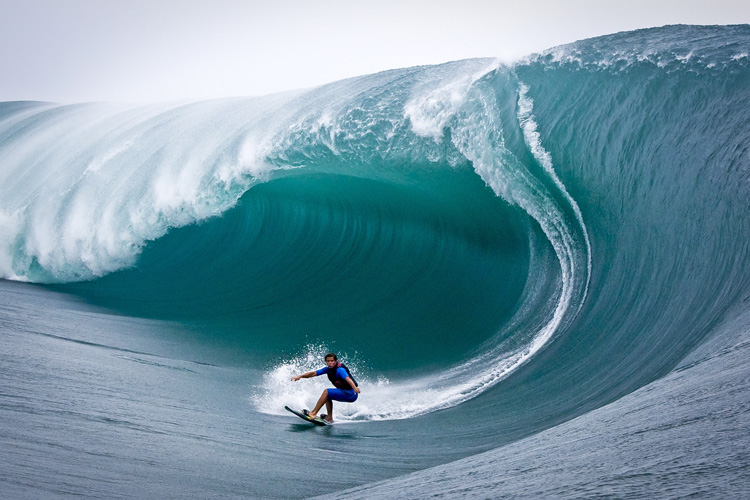
Have you ever been covered with a huge wave with 20 feet (6.1 meters) height while riding? How long have you been underwater? What have you felt?
For a riding surfer, these questions are essential. They define how intense, active, and high pressure the riding was.
In different conditions of riding, there are different feelings, such as thrilling swell riding in a hurricane or stormy weather, when paddling becomes a real challenge or excitement during overheads.
Did you know that a 20-foot wave is as heavy and wide as a real building?
When you go riding into such a wave, you crash it while riding, and every part is like a blade, sharp but hard with a depth of 203 feet (61.87 meters).
These types of waves are attractive for riding and, at the same time, scary even for advanced surfers.
Table of Contents
Teahupoo: Unique Place for Riding a Huge Wave
This wave is Teahupoo (pronunciation is like cho-po), the most powerful one in the ocean, the giant wall of water with incredible power. Let’s look closer at what the Teahupoo is.
The Teahupoo is considered to be a complicated challenge for riding for all the surfers in the world. The Teahupoo is so intense that it has been overcome by riding only once in 2000.
Many years ago, people couldn’t imagine that riding the Teahupoo was possible because its steepness struck their minds.
People thought about the possibility of riding the Teahupoo, however, they also believed that after such riding a surfer would fall and get injuries due to the reef, sharp as a razor.
It was thought so until 19 years ago when Laird Hamilton could do the kind of riding that others were scared off after some years of efficient training.
That riding achievement caused the beginning of a lot of further attempts for riding the Teahupoo and start of the Billabong Pro, the famous riding competition in that very location of the first riding, in the village of Teahupoo, located on one of the coasts of Tahiti and washed by the Pacific Ocean.
Are there any scientific explanations about riding the Teahupoo? Firstly, let’s have a look at some facts about waves in general and then proceed to this powerful Teahupoo and possibilities for riding it.
Formation of Waves
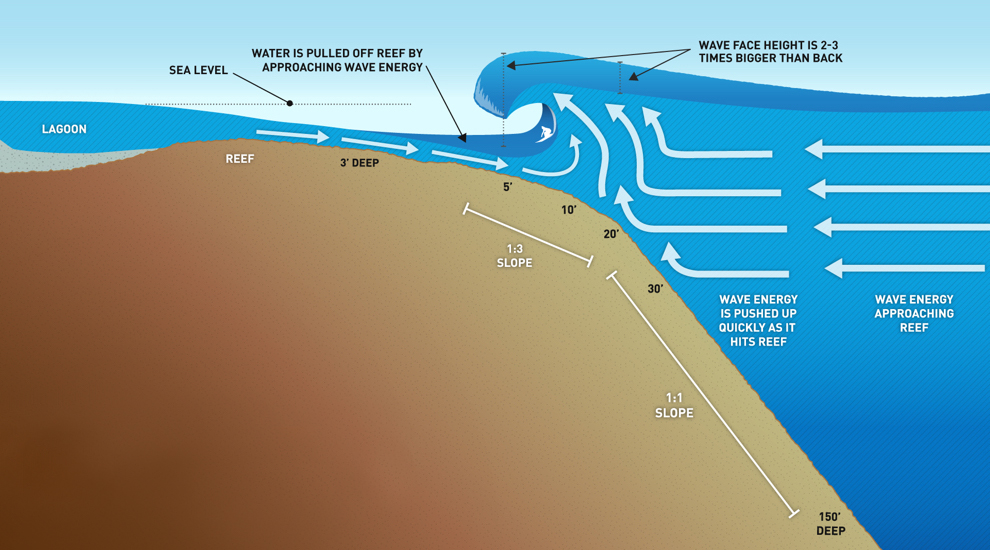
Many people consider the waves to be just the water that moves. It goes up, then down, and it repeats that a thousand times.
You can watch it lying on the beach. But water doesn’t move without a reason.
The moving force, in this case, is the energy going through the water and making it move.
What do you think – where this energy arises? The answer is wind power.
It blows, touches the water surface, gives it a push, a rubbing between them occurs, and waves start going up with each movement becoming stronger.
Thus, the above-mentioned facts drive us to the conclusion that the waves are not just moving water but moving energy which is going through them and making them move too.
It’s a real miracle created by nature. Let’s look at how the wave breaks and what influence it has.
How Waves Break
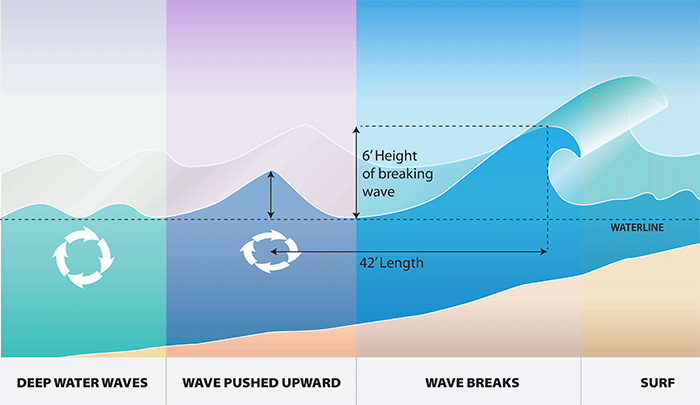
Imagine the wave bathing the beach. How can you understand that it’s time for riding?
The wave is ready for your riding when it is not too deep, and the water gains weight and falls covering itself.
Collapsing occurs when the wave crashes into something – a reef, shoreline, or cliff.
The nature of obstacles on its way influences its character. When the wave breaks into something, we can say it actually breaks, and, as a result, the energy is released out of it, and it reaches its peak.
Teahupoo’s nature
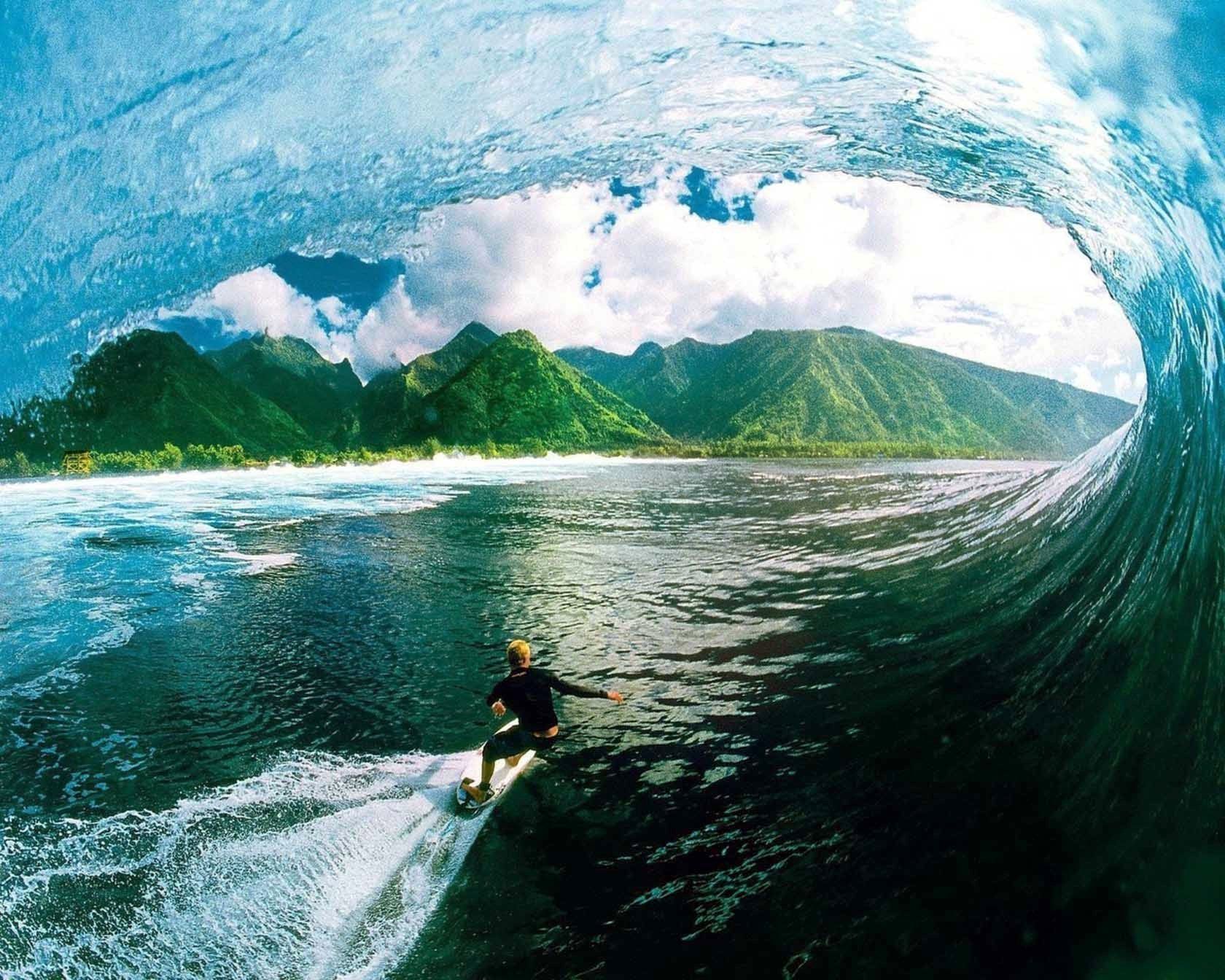
As you might guess, the wave we’re discussing is the Teahupoo, and it’s an extraordinary phenomenon. You could see many kinds of big waves that are high, thick, and wide.
But the power in the Teahupoo is not about this.
When the highest wave can reach about 80 feet (24.38 meters), the Teahupoo’s height is about 30 feet (9.14 meters). Thus, the big Teahupoo occurs when the ocean decides to release the energy in an incredibly thick water roll.
The Teahupoo’s unique feature is not only its mass but also its speed. The massive wave gets a rise quickly in a wink.
You can’t see the Teahupoo everywhere because there should be special conditions for the Teahupoo formation.
Imagine your usual wave with a different magnitude: the huge amount of water that the ocean needs to release, to send somewhere, the bottom of the ocean getting ready by becoming shallow.
Then, the rise comes and, suddenly, the huge water mass breaks. All this is about the Teahupoo wave.
Your local waves are probably surging ones. To form them, the water should be deep and a shoreline should be steep.
The shape of such a formation is created beforehand in it with a little amount of white foam. The face of the foam, as it was said, is steep.
If it goes quickly and step-by-step, it becomes plunging, and the surfers who are riding such waves go on barrels.
The Teahupoo is about a geographical situation and geology. Tahiti, where the Teahupoo occurs, is a country of islands.
The chain of them was formed by volcanoes, and we call it an archipelago. The shoreline is steep due to the break of a reef that is vertical.
These conditions usually add to the formation of the huge Teahupoo and challenges for riding. The reason is the water that faces a reef and there is no other way for it than dropping from the top on the reef.
But the Teahupoo has an unexpectedly tidy nature.
It may be explained by reef channels that help the water return to the ocean. You can’t see these channels with your eyes but they are clearly seen from a satellite.
It all is explained by Teahupoo’s geology and its mountains. You probably know that for a coral to grow, some special conditions are needed.
One of them is the concentration of salt in the water. So, when the water with the low concentration of salt or freshwater goes down to the reef, these channels appear in a snap.
The formed channels contribute to forming smooth waves in that area. Now, you can understand why Teahupoo’s waves are so rare.
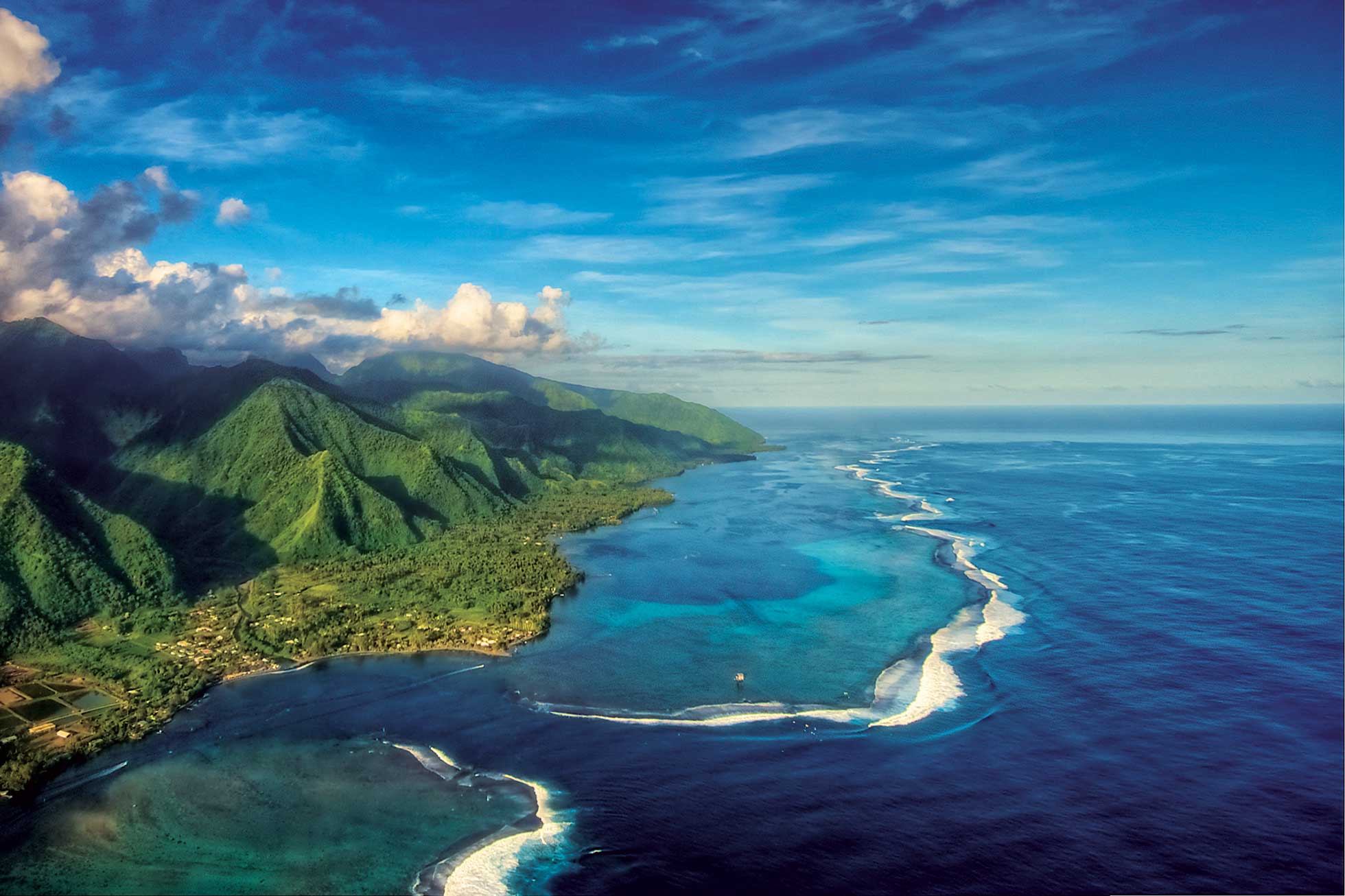
The channels affect the level of the water, so they come and go gradually.
So, in a so-called safe zone, there is not much fuss about the Teahupoo, and people can do their usual things in the water without any fear of the Teahupoo.
It occurs only if there is a reef. The fast current may be a reason for surfers’ sinking while riding.
Thus, Teahupoo place is unique and controversial for riding. One more fact about the village of Teahupoo is the above-mentioned shore steepness.
It influences coral growth because these sea plants use the light of the sun to photosynthesize. It also adds the above-described gradualism to waves for better riding.
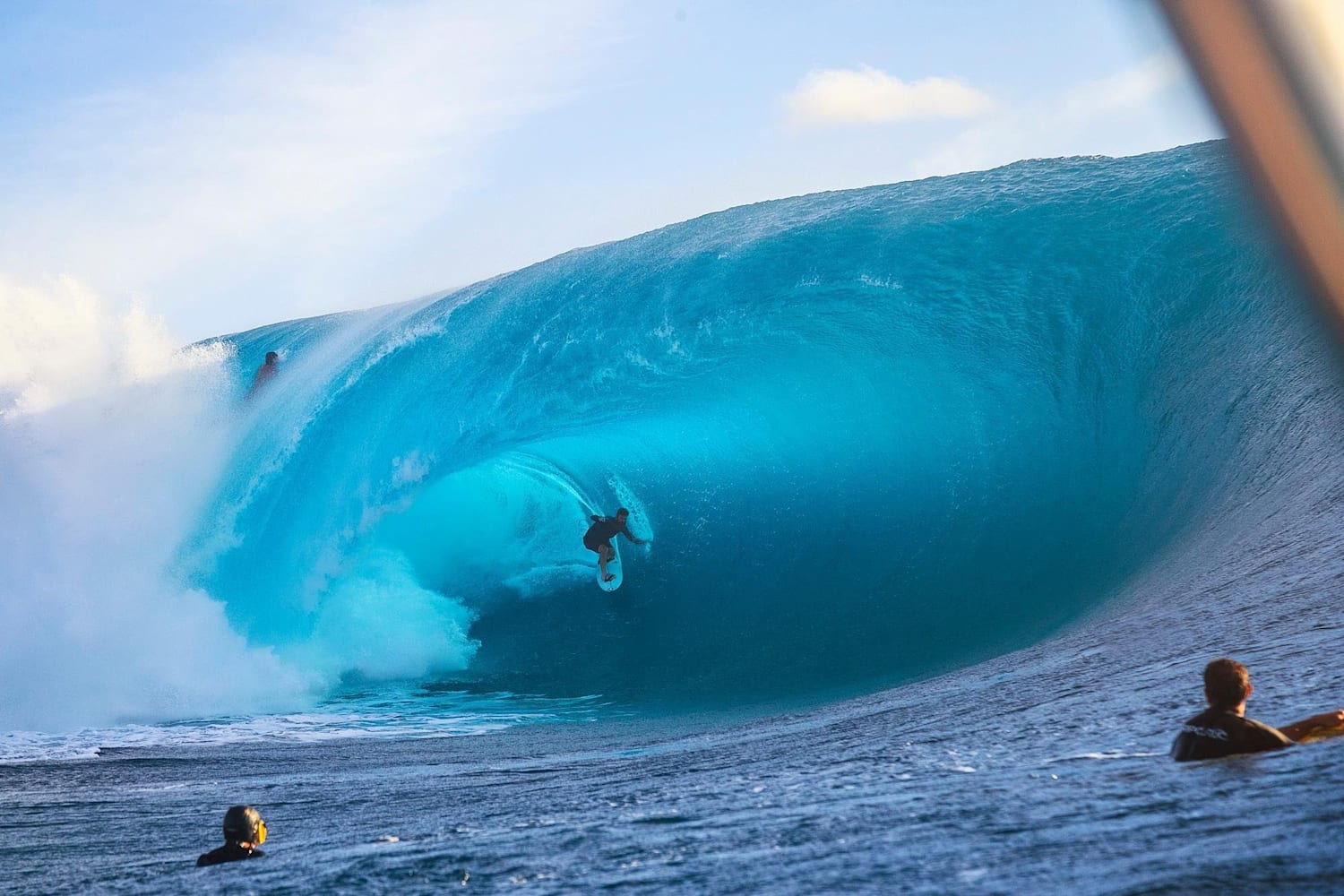
It’s time to be aware of the last fact about Teahupoo’s waves and why they are so unique for riding and not similar to the ones in other places.
They are huge and it may seem like all the water from the ocean wants to get out of it.
The water that contributes to creating channels in the reef also impacts the wave and how thick it may be.
If after reading this article you want to try riding this wave, remember that anything can happen. The Teahupoo is not big every time.
It may also be about 5-7 feet (1.52- 2.13 meters) in height. And there is much less water than a huge wave usually needs.
Moreover, it’s not about riding competition only. There you can find inspiration for further riding and just enjoy the nature that is unique now and will be unique for many years more.




